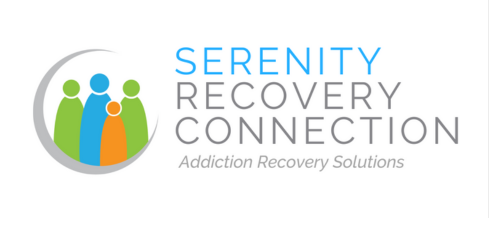Health Disparities and Substance Use Disorder
Health Disparities and Substance Use Disorder
By Julia Brownfield, MPHE
Director of Programs, Springs Recovery Connection
Health disparities related to substance use disorder (SUD) can be defined as those preventable differences in the burden experienced by individuals based on specific demographics that exacerbate their vulnerability (1). Such demographic factors include race, ethnicity, education level, gender, sexual orientation as well as income stability; and directly correlated to inequality in the distribution and access of social, political, environmental, and economic resources (1). As a result, some people in certain marginalized groups or minorities end up suffering disproportionately from the implications of SUD (6).
The Problem
One of the most predominant misconceptions is the notion that there is a significant disparity in drug and substance use among different demographics in a population. However, decades of research have consistently shown that this notion is inaccurate as far as defining the source of disparity in burden experienced (6). This means that African Americans are no more abusers of drugs and other substances than Caucasians, Latinos, or any other group in America. Therefore, the next question would be why are the disparities in burden experienced from SUD?
The causes of disproportionate suffering due to use among different racial and demographic characteristics are multifaceted. One of the most cited problems bringing up this disparity is equal access to affordable health care at the right time or treatment that is insensitive to this population’s unique circumstances. For instance, research shows that minority groups are more likely to begin treatment later into their addiction, than those that do not identify as a minority. Further, they are more likely to complete the treatment process than racial minorities. Those who identify as Hispanic or African American are more likely to suffer more extreme outcomes such as lack of safe housing after treatment. Other issues related to disparities in access to quality and affordable health care include the issue of Medicaid acceptance as a mode of payment for treatment.
Another issue contributing to the disparities in SUD-related burdens among different demographic groups is the inequalities in the U.S. justice system (2). One underlying problem is that racial minorities are incarcerated at a far much higher rate for drug-related crimes than their Caucasian counterparts who, through influential lawyers, typically end up with drug treatment as an alternative to a jail term (2). In this regard, racial disparities exist that result in both serious legal implications and discrepancies in drug treatment.
The justice issue is fundamental, especially considering that incarceration’s legal implications go beyond serving a prison sentence (2). Criminal conviction typically results in problems securing housing, employment, and other social services, leading to high recidivism rates. Where juveniles are concerned, the implications of being incarcerated can extend to inhibit proper functionality in adulthood (2).
Furthermore, disparities in the access to quality health care for SUD exist in many different forms. These may include lack of health insurance, geographical barriers, and social-economic factors. Minorities are usually overrepresented among the lower socio-economic income groups, making it impossible to purchase good health care coverage. This further worsens the problem of access to quality of care. In a recent study conducted among Mexican Americans, it was found that the issue of acceptance of Medicaid as an acceptable form of payment for treatment of SUD led to a statistically significant increase in access to quality medical care (5).
How to Address the Issue
It is still possible to fight SUD, especially among minorities, even when society is rife with disparities in health care. One of the revolutionary suggestions made by experts is using the integrated approach. This approach is based on the idea that SUD must not be treated differently or separately from other
physical or mental illnesses (5). Research shows that individuals with SUD are less likely to seek help for drug treatment. However, those with SUD usually seek health care when suffering from other illnesses such as HIV/AIDs, injuries, or overdoses (5). At this point, the healthcare system ought to integrate a range of services that can support and treat the patient. This involves regular screening for drug-related problems and follow-up after treatment.
In addition, the solution to the disparities in drug-related healthcare can also be found in the use of multifaceted professionals (3). For instance, the inclusion of sociologists, psychologists, religious figures, and educational experts can lead to better outcomes. For instance, cultural sensitivity must be cultivated to help psychiatrists respond to different demographic needs’ unique needs. Different approaches should be applied to different groups instead of relying on one-fit solutions (3). Other groups of individuals face specific cultural pressures and stressors that compound their mental health problems, thus leading to SUD. For this reason, mental health professionals are required today to be culturally competent and sensitive to the unique circumstances of different groups (3).
Another problematic area is research into the issue of disparities in SUD treatment and access to quality health care in general. Most research focuses on identifying the problem instead of producing evidence-based solutions (3). Minimal studies address possible solutions in dealing with these health disparities. Even, it remains an arduous task to fully address the issue of substance use with the rampant disparities in healthcare.
In conclusion, racist structures and policies that create inequalities must be identified and neutralized to facilitate positive public health outcomes. While it is challenging to effectively combat SUD in a disparate health care system, certain steps can be taken to mitigate the difference in access to quality healthcare.
1. Raising public and provider awareness of racial/ethnic disparities in care;
2. Expanding health insurance coverage;
3. Improving the capacity and number of providers in underserved communities; and.
4. Increasing the knowledge base on causes and interventions to reduce disparities.
Although evidence of racial and ethnic health care disparities is substantial, the evidence-base for developing interventions to eliminate these disparities remains limited. For example, efforts are currently underway to examine how training health care providers to offer culturally and linguistically appropriate services, increasing the use of electronic medical records to decrease medical errors and improve coordination of care, and increasing the use of financial incentives to promote high quality health care may reduce racial and ethnic health disparities. In addition, there is a growing effort to address factors outside the health care system, such as socioeconomic status, education, and geography, which have been shown to impact health status and access health care; and by holistically addressing the physical, mental, and social competencies of persons with SUD and with a focus on cultural competence and inclusion of different experts such as medicine, psychology, psychiatry, sociology, and educational experts.
References
1-Acevedo, A., Panas, L., Garnick, D., Acevedo-Garcia, D., Miles, J., Ritter, G., & Campbell, K. (2018). Disparities in the treatment of substance use disorders: does where you live matter?. The journal of behavioral health services & research, 45(4), 533-549.
2-APA. (2019, November). Position Statement on Addressing Racial and Ethnic Health Disparities in Substance Use Disorder Treatment in the Justice System.
3-Burlew, K., McCuistian, C., & Szapocznik, J. (2021). Racial/ethnic equity in substance use treatment research: the way forward. Addiction science & clinical practice, 16(1), 1-6.
4-CDC. (February 15). Promoting health equity. https://www.cdc.gov/drugoverdose/health-equity/info.html
5-Guerrero, E. G., Garner, B. R., Cook, B., Kong, Y., Vega, W. A., & Gelberg, L. (2017). Identifying and reducing disparities in successful addiction treatment completion: testing the role of Medicaid payment acceptance. Substance abuse treatment, prevention, and policy, 12(1), 1-10.
6-NIDA. (2001, March 1). Meeting the Challenge of Reducing Health Disparities. Retrieved from https://archives.drugabuse.gov/news-events/nida-notes/2001/03/meeting-challenge-reducing-health-disparities on 2022, February 18

